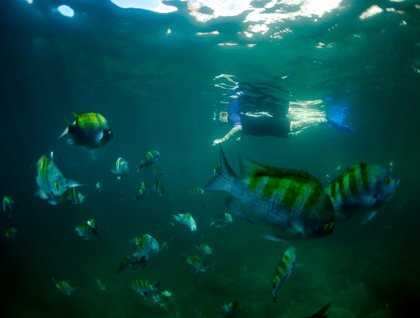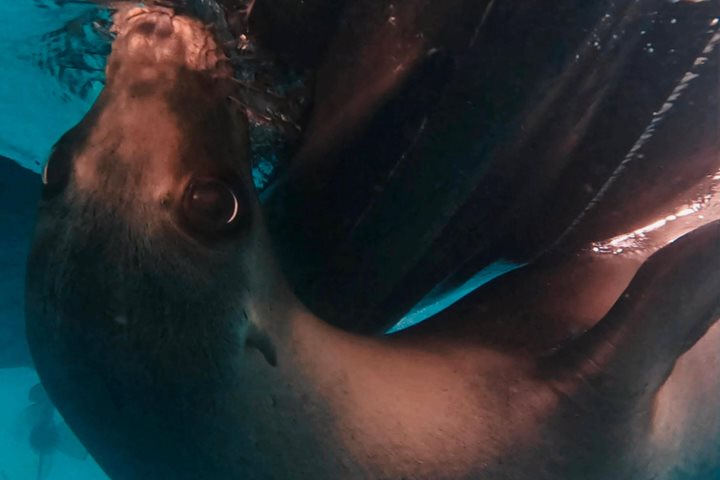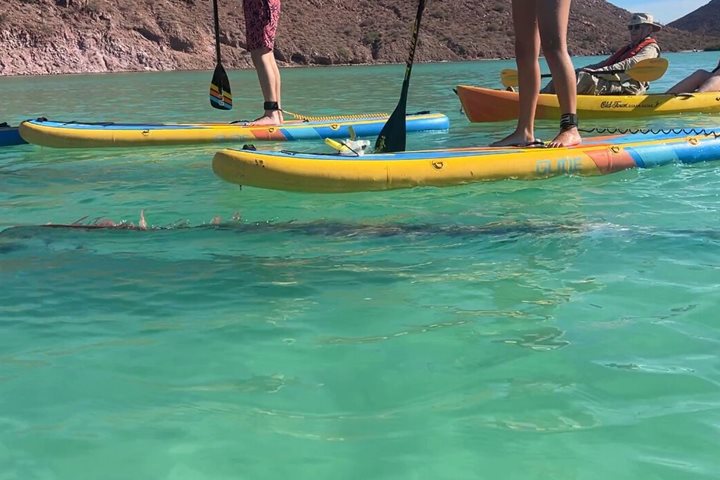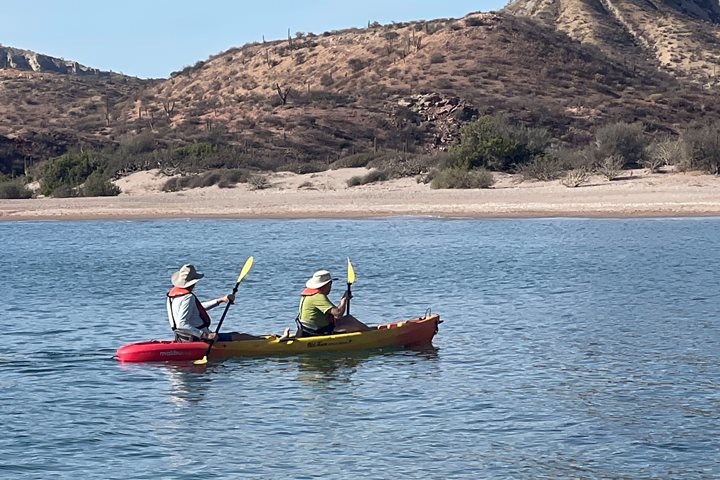Our morning was slated to start at 7 a.m. However, when cruising the blue-green waters of the Gulf of California, we have the potential to spot wildlife any time the sun shines. This morning the engines were pulled back, heads popped up off of their pillows, and an early morning wakeup call was set in action. If the sight of a blue whale mother and calf doesn’t get you out of bed, nothing else will. We crowded the National Geographic Sea Bird’s bow with binoculars and cameras in hand watching the pair roll and blow massive columns of water vapor in early morning golden light with Isla Carmen as a backdrop. Not bad for our first morning.
Since conditions were so mild, we took advantage of Isla Carmen’s intricate coastline to explore by kayak and Zodiac. The shoreline is adorned with an ancient seabed complete with fossilized clams, scallops, sand dollars, and more. All the while, we thought about the blue whales from our morning encounter.
After an action-packed morning we repositioned east to Isla Santa Catalina, one of the Gulf’s most beautiful and unique islands. Under the watchful eye of the landing’s granite "elephante" we walked the arroyo inland amongst towering cardon cacti and the endemic giant barrel cactus. Scurrying desert iguanas, chuckwallas, and emerald green Santa Catalina side blotched lizards scurried from place to place and loggerhead shrikes looked for an easy next meal. But the highlight for the afternoon must be sighting the most unique snake of the region, a rattle-less rattlesnake. With no potential predators and no large mammals to be trampled by, this species has gradually lost its rattle, but not its venom. Although beautiful, it still demands respect.
Today was filled with amazing encounters with several evolutionary marvels. We started our day with the largest animal to ever live, the blue whale. On Santa Catalina Island we found the rattle-less rattlesnake, an animal found nowhere else on the planet. Then we learned of convergent evolution while watching sphinx moths pollinating flowers in broad daylight, an insect with striking similarities to hummingbirds. The Gulf of California has been described as the Mexican Galápagos, but it should not live in the shadow of its Ecuadorian cousins. The Gulf and its hundreds of islands and endemic species are a true marvel that deserves to be experienced with no pretenses. It will surprise you every day and leave you wanting more.







